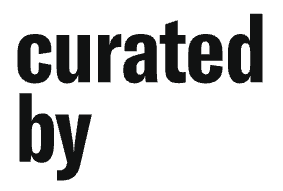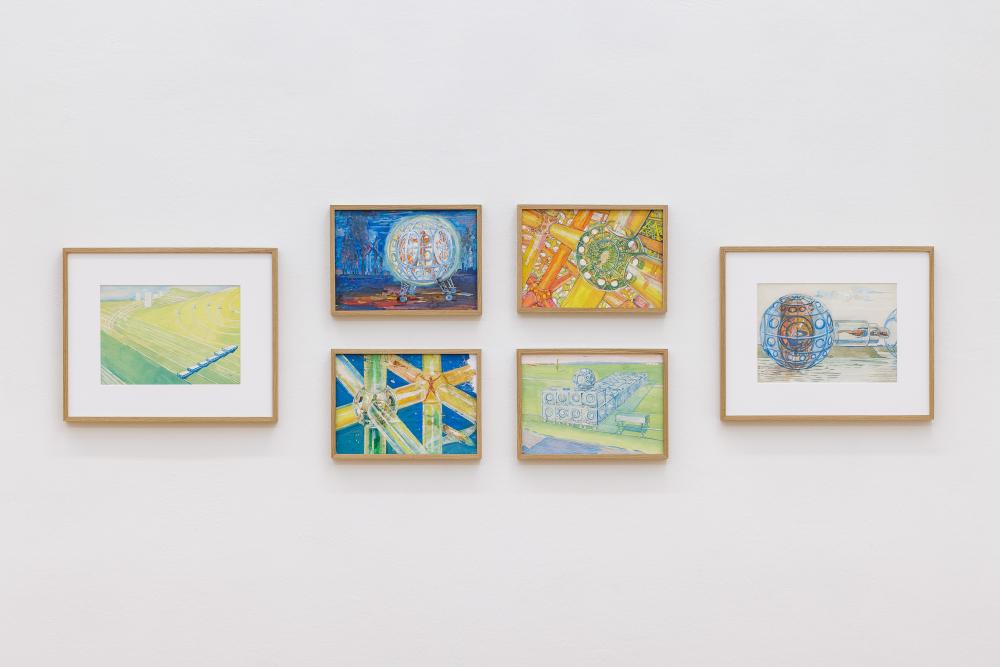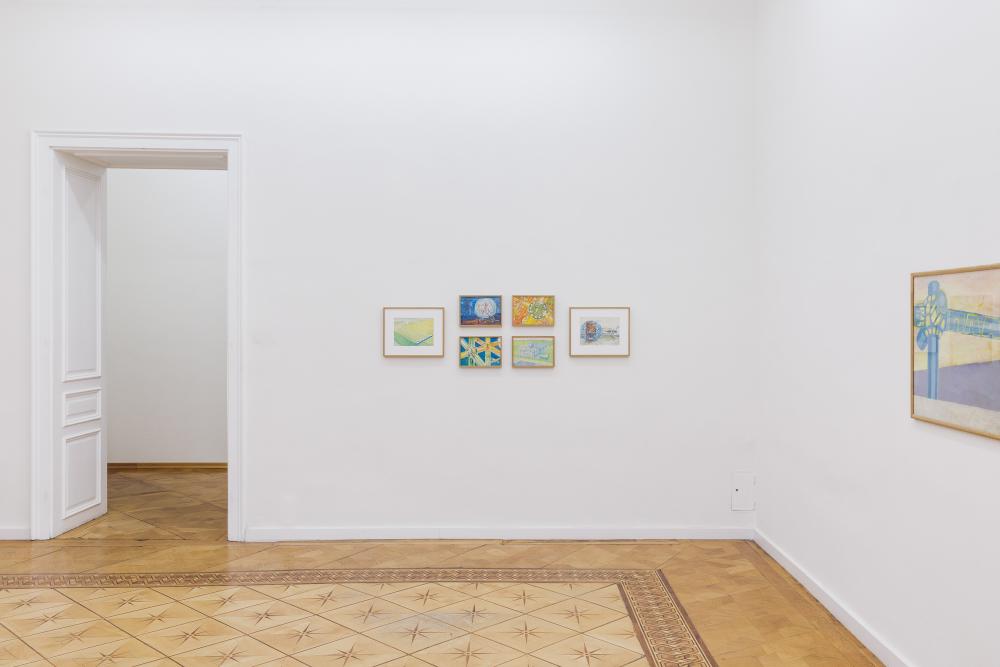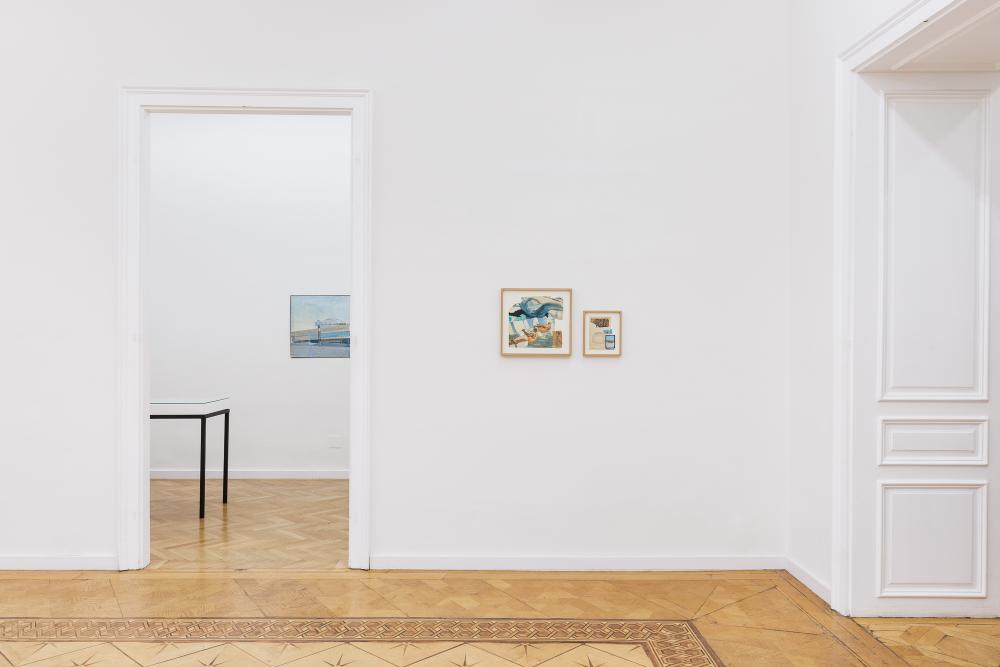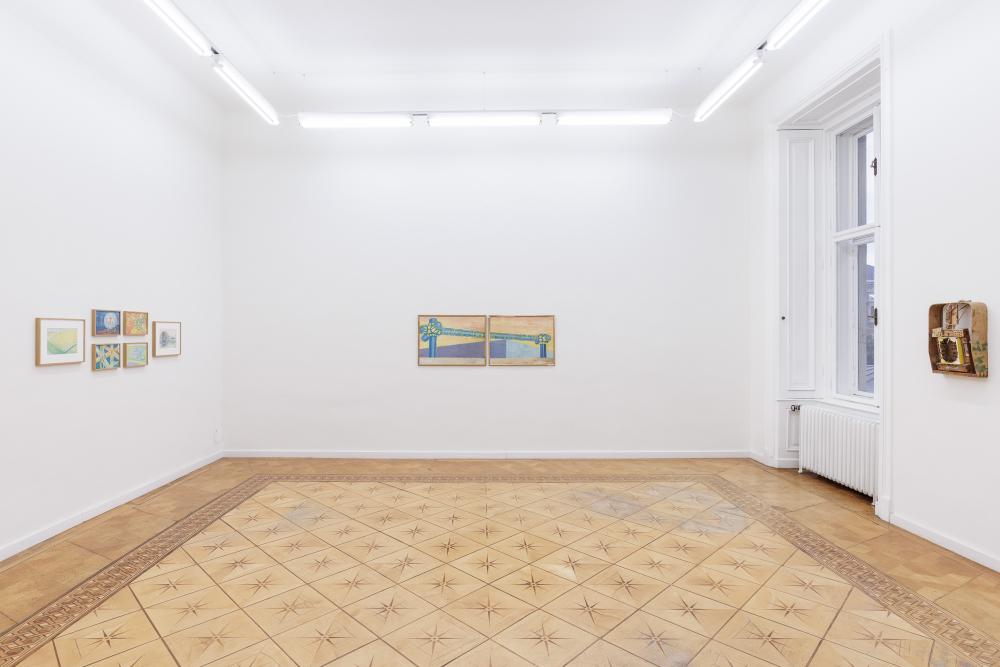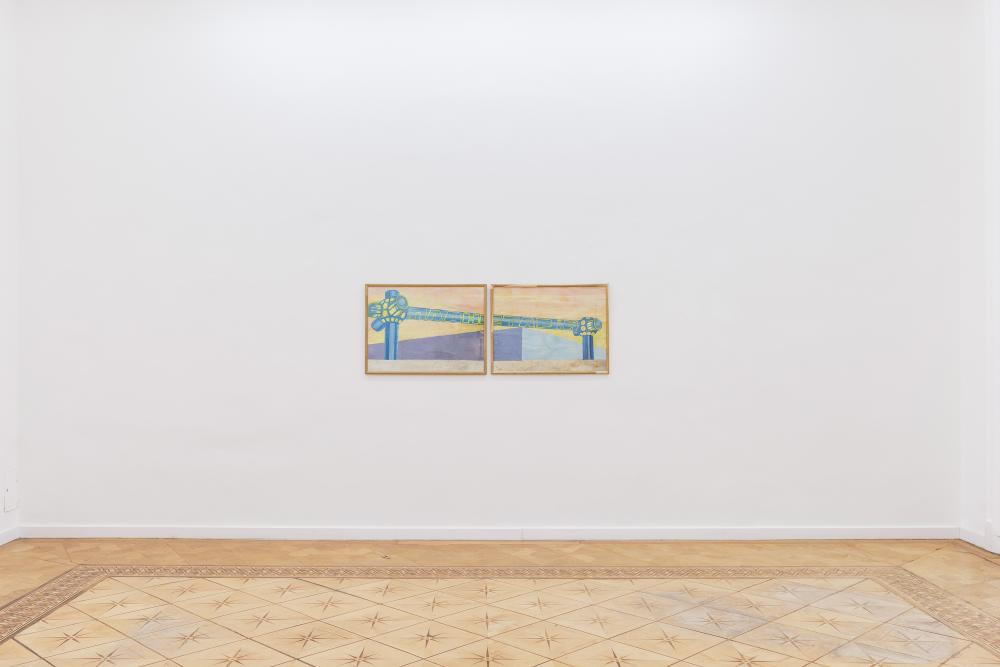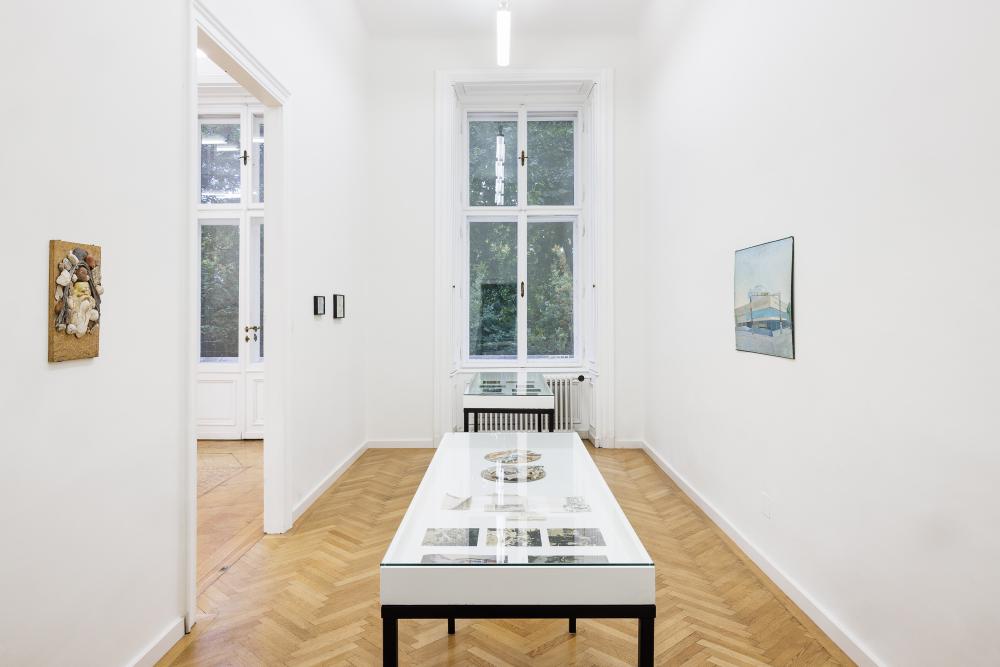Croy Nielsen curated by Natalia Sielewicz
„The Neverending Eye“

www.croynielsen.com
Curator(s):

Natalia Sielewicz is an art historian and curator at the Museum of Modern Art in Warsaw. In her exhibitions and essays she undertakes issues related to feminism, technology and affective cultures. Most recently she curated 'Agnieszka Polska. The Thousand-year Plan' (2021), 'Paint also known as Blood. Women, Affect and Desire in Contemporary Painting' (2019), 'Hoolifemmes' (2017). She also curated the 'Ministry of Internal Affairs. Intimacy as Text' (2017), which was dedicated to affects, autofiction and poetics of confession in literature and visual arts, as well as: 'Private settings' (2014), one of the first institutional shows analyzing the impact of the Internet 2.0. Upcoming projects include 'The Dark Arts. Aleksandra Waliszewska and Symbolism of the North and East' (co-curated with Alison M. Gingeras).

Artist(s):
- Fedir Tetyanych
Exhibition text
More
Fedir Tetyanych (1942–2007) grew up during World War II in the village of Kniazhychi near Kyiv. There, through his early contact with land and nature, and against the backdrop of the armed conflict (as a child he was injured by a piece of a projectile), his idiosyncratic perception of rural cosmism and human responsibility for the surrounding world took form.
As an artist, Tetyanych worked against the constraints of various ideologies and disciplines. He was an author of monumentalist mosaics and decorative panels in the Soviet era, a chronicler of Ukrainian indigenous cosmologies and Cossacks’ anarchist history, a joyous performer, writer of cosmist and ecological manifestos, egalitarian hoarder of objects and an activist who wished to turn landfill sites and factories into theatres. All these labels apply yet collectively fail to encompass Tetyanych’s nonconformist legacy and prolific output.
In the 1960s, the artist began his first State commissions for monumental decorations in public space, which he often created using found items: discarded industrial waste, scraps of metal, cans, screws and shards of glass. These materials became prime matter for his future costumes and performances on the streets of Kyiv from the 1980s onwards.
Tetyanych considered his whole life to be one single performance, but he was more informed by science-fiction literature, cybernetics and cycles of nature than by any of his contemporaries in the field of avant-garde art. In the 1970s, he developed his own version of ecologically-informed cosmism, stemming from an awareness of infinite unity with the universe and mutual interconnectedness, which he called Frypulia. According to him, humanity, even if eventually turned into radio waves or rays of light, would carry information about itself and reappear at any point of space and time.
The exhibition pays special attention to Tetyanych’s concept of the biotechnosphere – an autonomous unit for shelter, energy-storage and transportation. The artist made numerous drawings and watercolours imagining their future application, he also installed the actual models in public space; for example, by incorporating them into his State-commissioned monumentalist works. Today, as we witness the rise of fossil-fascism, sowing crisis and military and information warfare, it is uncanny to trace the previous locations of biotechnospheres in Popasna, Peremoga and Kyiv on a map; in many instances, they mirror current sites of brutal military destruction.
As none of these sculptures survived the past political transformation, and while Ukraine continues to resist the ruthless genocidal and ecocidal Russian invasion, what can we learn from Tetyanych? A radical shift of political imagination and visuality is urgently needed. Tetyanych’s strategy of resistance and political experiment offers us a glimpse into what a project of world-making and healing could mean, but what place does his insubordinate practice occupy in the visual canon of the international avant-garde? Or, indeed, outside it? His future-oriented project reminds us that repair and ethics need to be constantly anticipated, rehearsed and practiced outside of art to produce sustainable results. Natalia Sielewicz would like to thank Anna Tetyanych-Bublyk, Bohdan Tetyanych-Bublyk, Lada Tetyanych-Bublyk, Nikita Kadan, Liza German and Anna Potiomkina.
The exhibition 'Fedir Tetyanych. The Neverending Eye' is a presentation of one of the most visionary Ukrainian artists working at the intersection of cosmism, performance, cybernetics and ecology-driven practice. The show introduces his multifaceted oeuvre, which embodied a continued search for artistic freedom and euphoric unity with the universe.
Fedir Tetyanych (1942–2007) grew up during World War II in the village of Kniazhychi near Kyiv. There, through his early contact with land and nature, and against the backdrop of the armed conflict (as a child he was injured by a piece of a projectile), his idiosyncratic perception of rural cosmism and human responsibility for the surrounding world took form.
As an artist, Tetyanych worked against the constraints of various ideologies and disciplines. He was an author of monumentalist mosaics and decorative panels in the Soviet era, a chronicler of Ukrainian indigenous cosmologies and Cossacks’ anarchist history, a joyous performer, writer of cosmist and ecological manifestos, egalitarian hoarder of objects and an activist who wished to turn landfill sites and factories into theatres. All these labels apply yet collectively fail to encompass Tetyanych’s nonconformist legacy and prolific output.
In the 1960s, the artist began his first State commissions for monumental decorations in public space, which he often created using found items: discarded industrial waste, scraps of metal, cans, screws and shards of glass. These materials became prime matter for his future costumes and performances on the streets of Kyiv from the 1980s onwards.
Tetyanych considered his whole life to be one single performance, but he was more informed by science-fiction literature, cybernetics and cycles of nature than by any of his contemporaries in the field of avant-garde art. In the 1970s, he developed his own version of ecologically-informed cosmism, stemming from an awareness of infinite unity with the universe and mutual interconnectedness, which he called Frypulia. According to him, humanity, even if eventually turned into radio waves or rays of light, would carry information about itself and reappear at any point of space and time.
The exhibition pays special attention to Tetyanych’s concept of the biotechnosphere – an autonomous unit for shelter, energy-storage and transportation. The artist made numerous drawings and watercolours imagining their future application, he also installed the actual models in public space; for example, by incorporating them into his State-commissioned monumentalist works. Today, as we witness the rise of fossil-fascism, sowing crisis and military and information warfare, it is uncanny to trace the previous locations of biotechnospheres in Popasna, Peremoga and Kyiv on a map; in many instances, they mirror current sites of brutal military destruction.
As none of these sculptures survived the past political transformation, and while Ukraine continues to resist the ruthless genocidal and ecocidal Russian invasion, what can we learn from Tetyanych? A radical shift of political imagination and visuality is urgently needed. Tetyanych’s strategy of resistance and political experiment offers us a glimpse into what a project of world-making and healing could mean, but what place does his insubordinate practice occupy in the visual canon of the international avant-garde? Or, indeed, outside it? His future-oriented project reminds us that repair and ethics need to be constantly anticipated, rehearsed and practiced outside of art to produce sustainable results.
Natalia Sielewicz would like to thank Anna Tetyanych-Bublyk, Bohdan Tetyanych-Bublyk, Lada Tetyanych-Bublyk, Nikita Kadan, Liza German and Anna Potiomkina.

